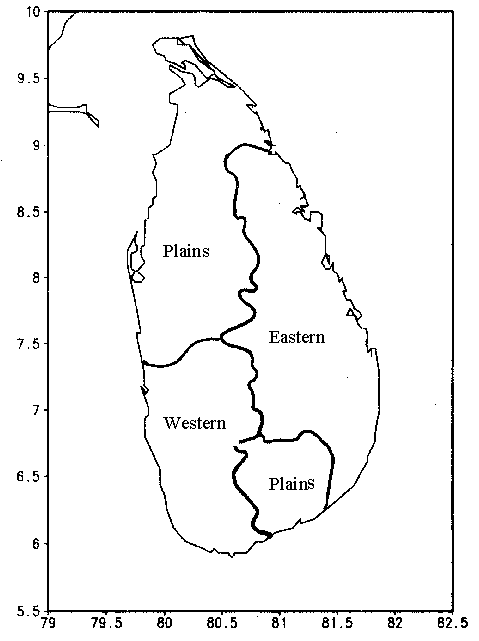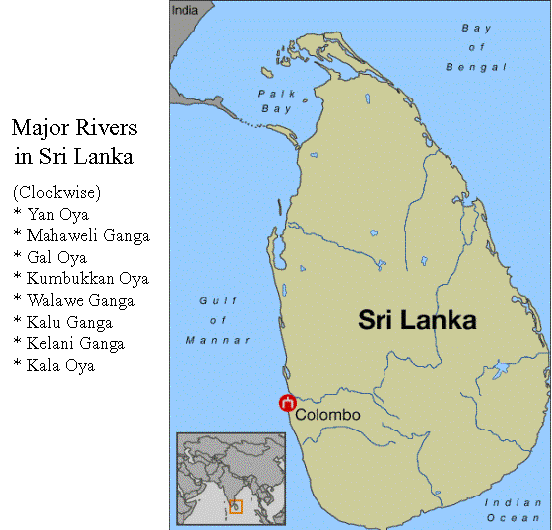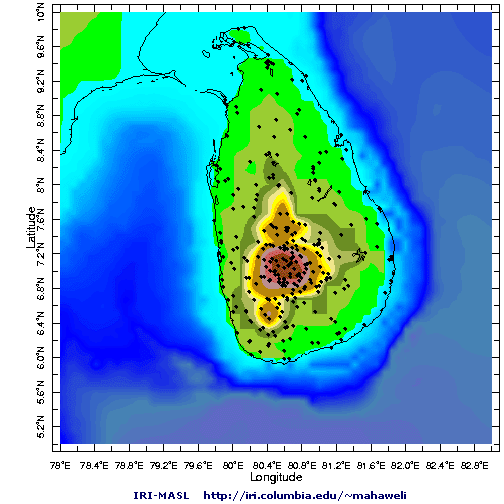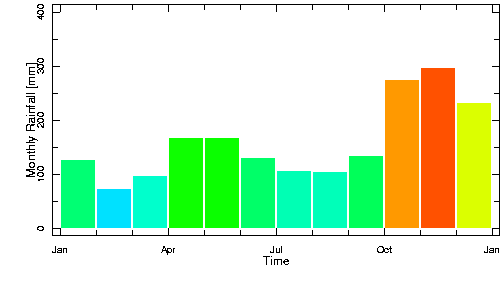
| ||||||||||||
|
Sri Lanka Projects -> River Basin, Mahaweli -> Climate Issues Climate Issues
Introduction Introduction to the Climate of the Mahaweli Basin in Sri LankaThe Mahaweli Basin drains the water on both the Eastern and Western Slopes of Sri Lanka and discharges it at Trincomalee in the Eastern Coast. One of its tributaries Amban Ganga is in the Northern Plains. Following the transbasin irrigation schemes that has been implemented in the Mahaweli, water is diverted to several catchments in the Northern plains. Given its size, Sri Lanka shows a remarkable variation of topography and climate among its regions. The variation in temperature is modest with the mean value being 27 degree centigrade with a a mean daily range of 6 C. The relative humidity varies from 60% to 90%. Westerly winds prevail over the island from May to September and North-Easterly winds prevail from December till February. However, it is the seasonal and regional variation of rainfall that is remarkable and which shapes much of its physical and biological landscape of the island.
Rainfall measurements are available for Sri Lanka from 1853 and there are a dozen stations which have a 130 year rainfall record and over 500 rainfall recording stations with a 50 year record. Some of these stations are shown in the figure below along with the topography.
Based on rainfall records for 17 stations, the following rainfall climatology has been constructed.
A false color scheme is in use for this figure. Here one sees that the highest rainfall for Sri Lanka is in the period from October to December and from April to June. These are features that are evident in all regions of the island. Most of the rain that falls in the intervening period is due to mountain effects. Thus there is high rainfall on the Western slopes of the hills from May to September and on the Eastern slopes of the island from December till February. Seasons in Sri LankaFollowing the fashion in India it is conventional to define the seasons in Sri Lanka as the North-East monsoon (DJF), First Inter-Monsoon (MA), South-West monsoon (MJJAS) and Second Inter-Monsoon (ON). These manner of demarcating seasons ignores the rainfall mechanisms of Sri Lanka.The significant climatic processes that bring rainfall to Sri Lanka are Inter-Tropical Zone (AMJ and (ON), Easterly Jet mechanism (JA), the monsoon (OND) and orographic rainfall in the Western hillslopes (MJJAS) and in the Eastern hillslopes (DJF). While there is no clear cut method of specificying seasons for Sri Lanka, the conventional nomenclature is not sensitive to these features. Instead, even using a 3 month interval for seasons such as JFM, AMJ, JAS and OND is superior.
Climatically Homogeneous regions in Sri LankaAn objective scheme to pick out climatologically homogeneous regions was presented by Puvaneswaram and Smithson as the Plains, Eastern and Western regions. Regionalization into Climatically Homogeneous Zones The rainfall climatology for each region is shown on the top row of the Mahaweli Climatology web-page. The Western and Eastern regions may be subdivided into the coastal (< 200 m altitude) and mountain (>200 m altitude). The Plains region may be divided among the Northern and Southern Plains. All of these climatologies shows some seasonal distintions and all of these climatologies are available below. In addition the inter-annual and decadal variation of rainfall for the
130 year record can also be viewed by following the links in the following
table. Below the main figure in the links for inter-annual and decadal
variability for the annual rainfall are shown similar variability for the
seasonally disaggregated rainfall. In all of these figures, a way to visualize
the ENSO links is to color the bar for each month/season/year with the
contemporaneous NINO3 (or Sea Surface Temperature in the equatorial Eastern
Pacific Ocean).
|



